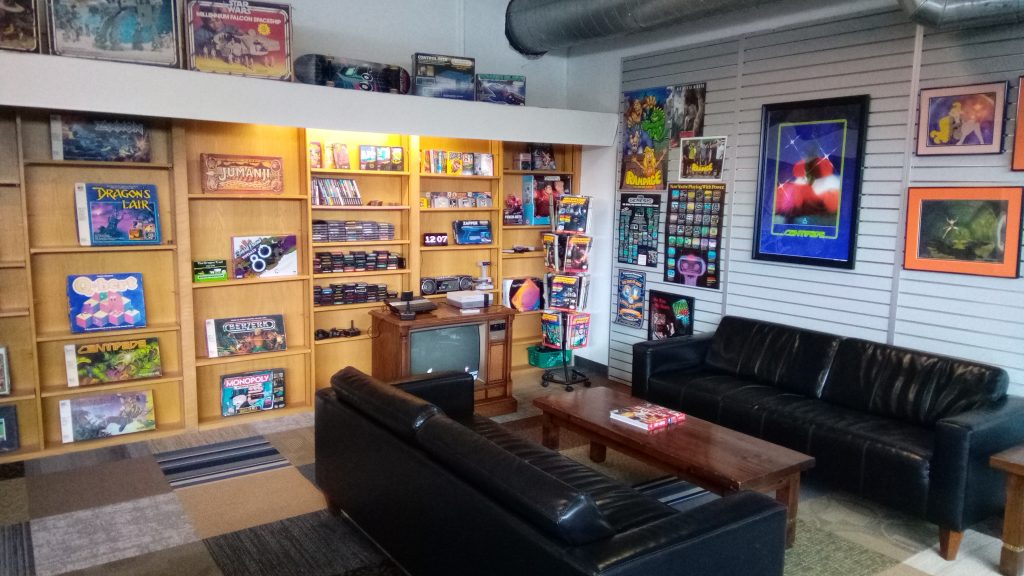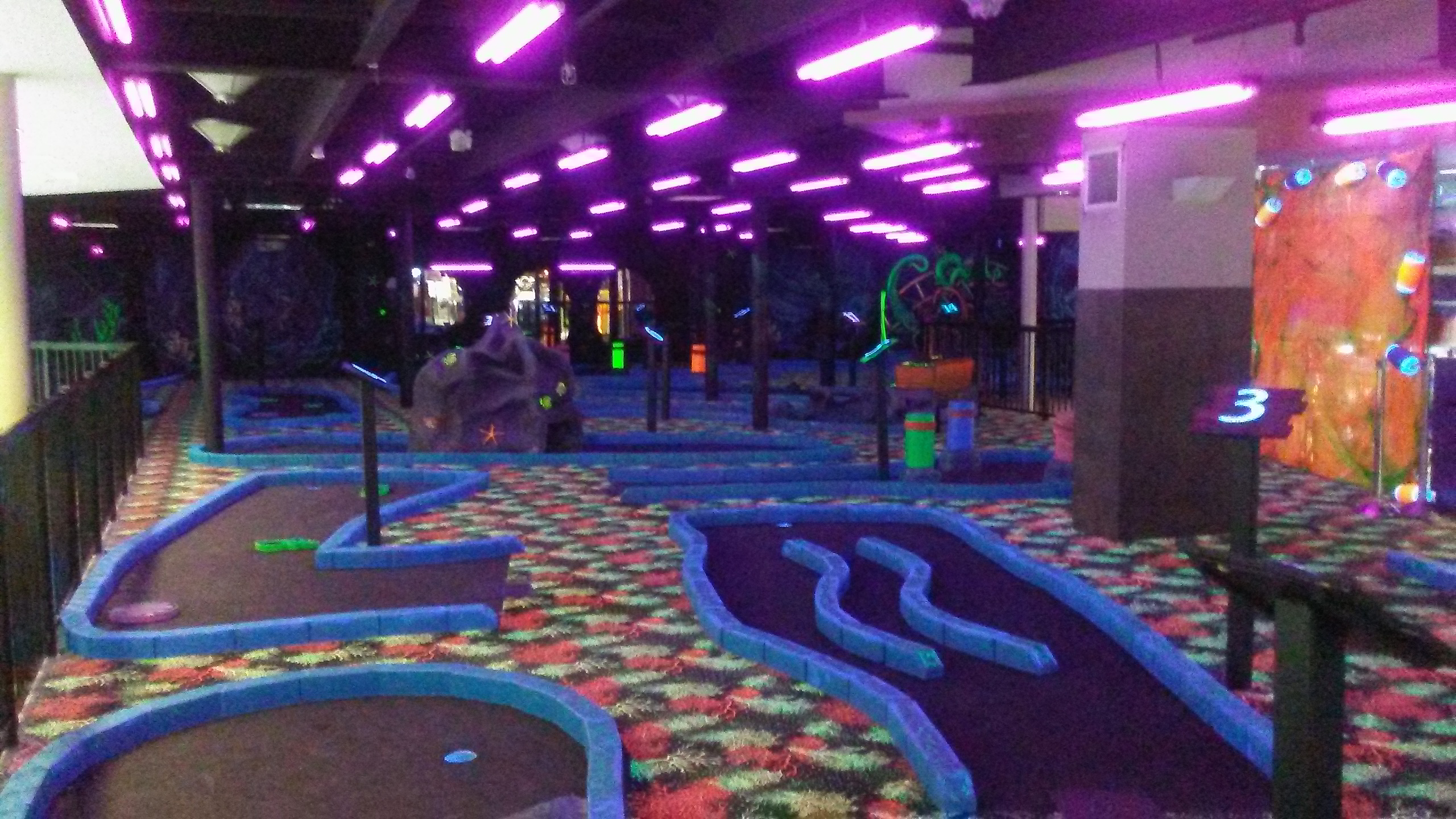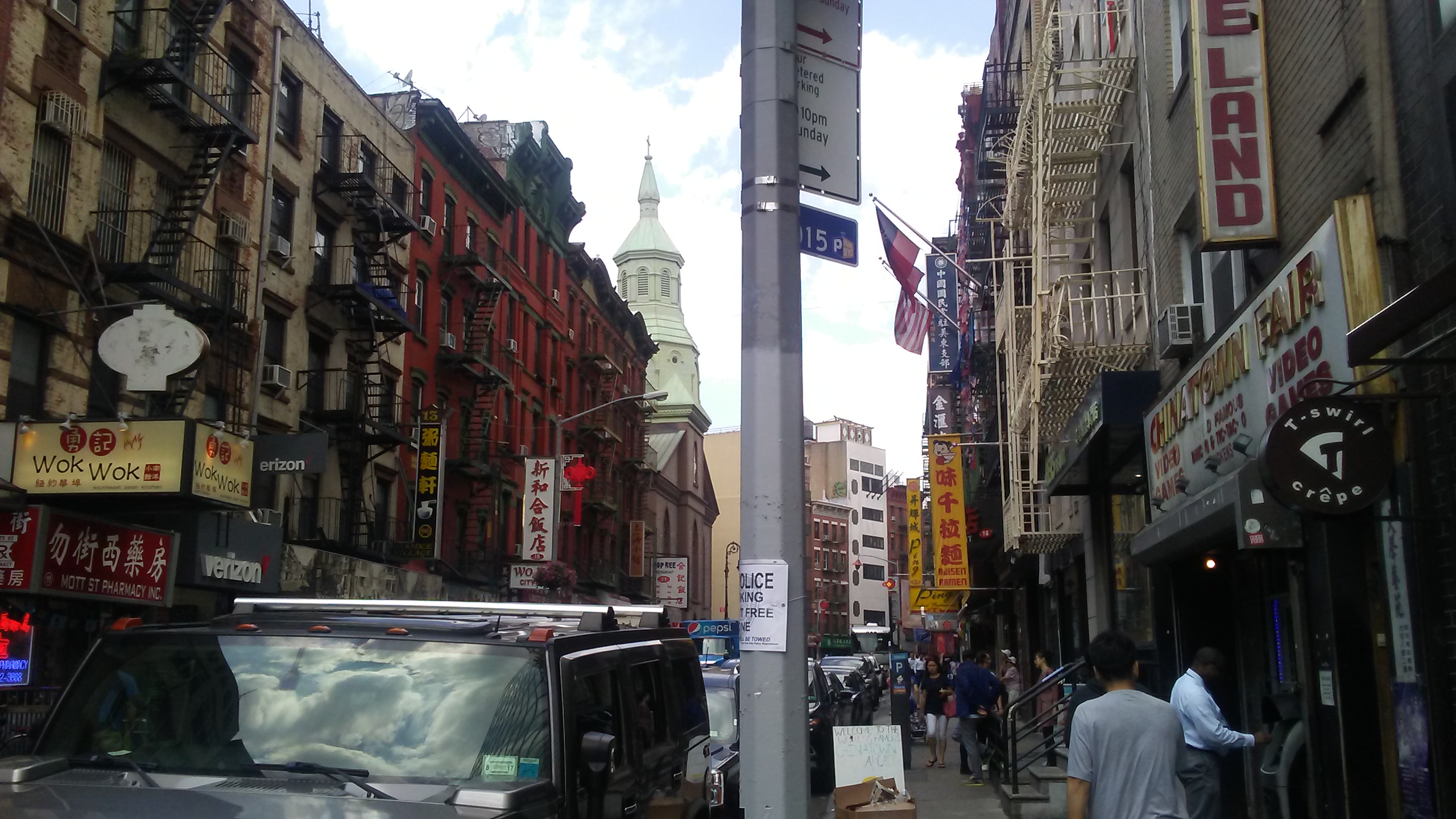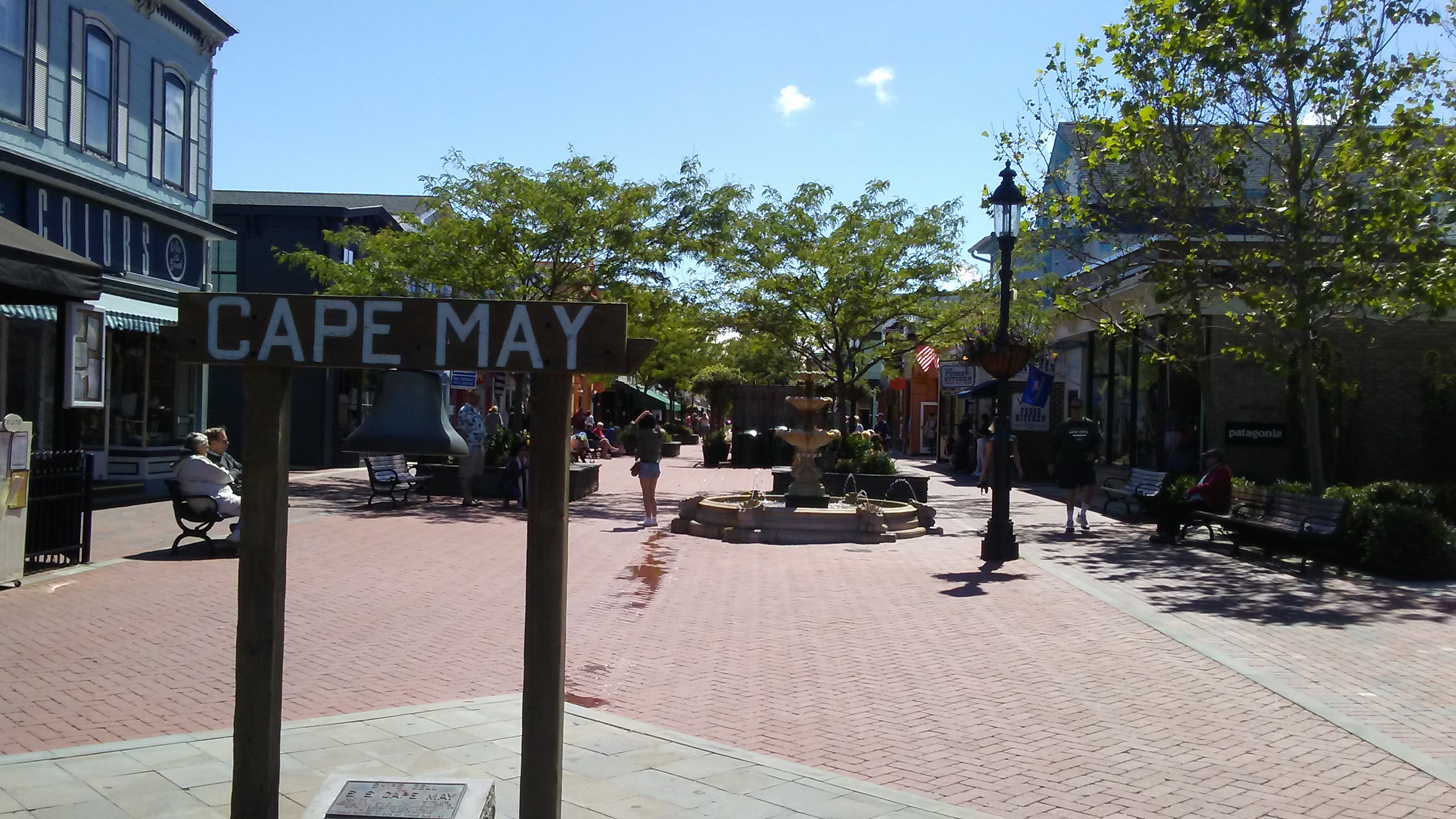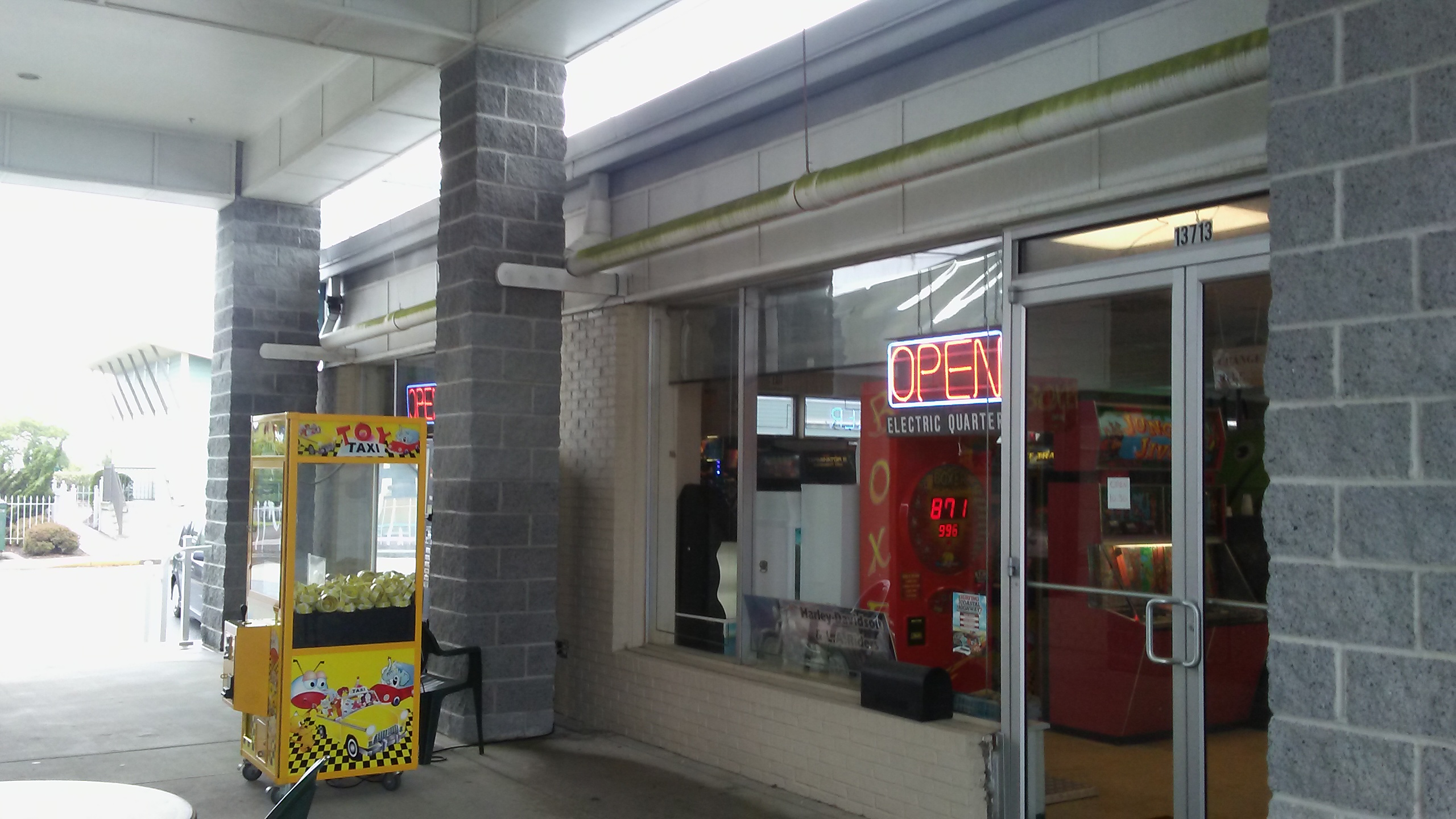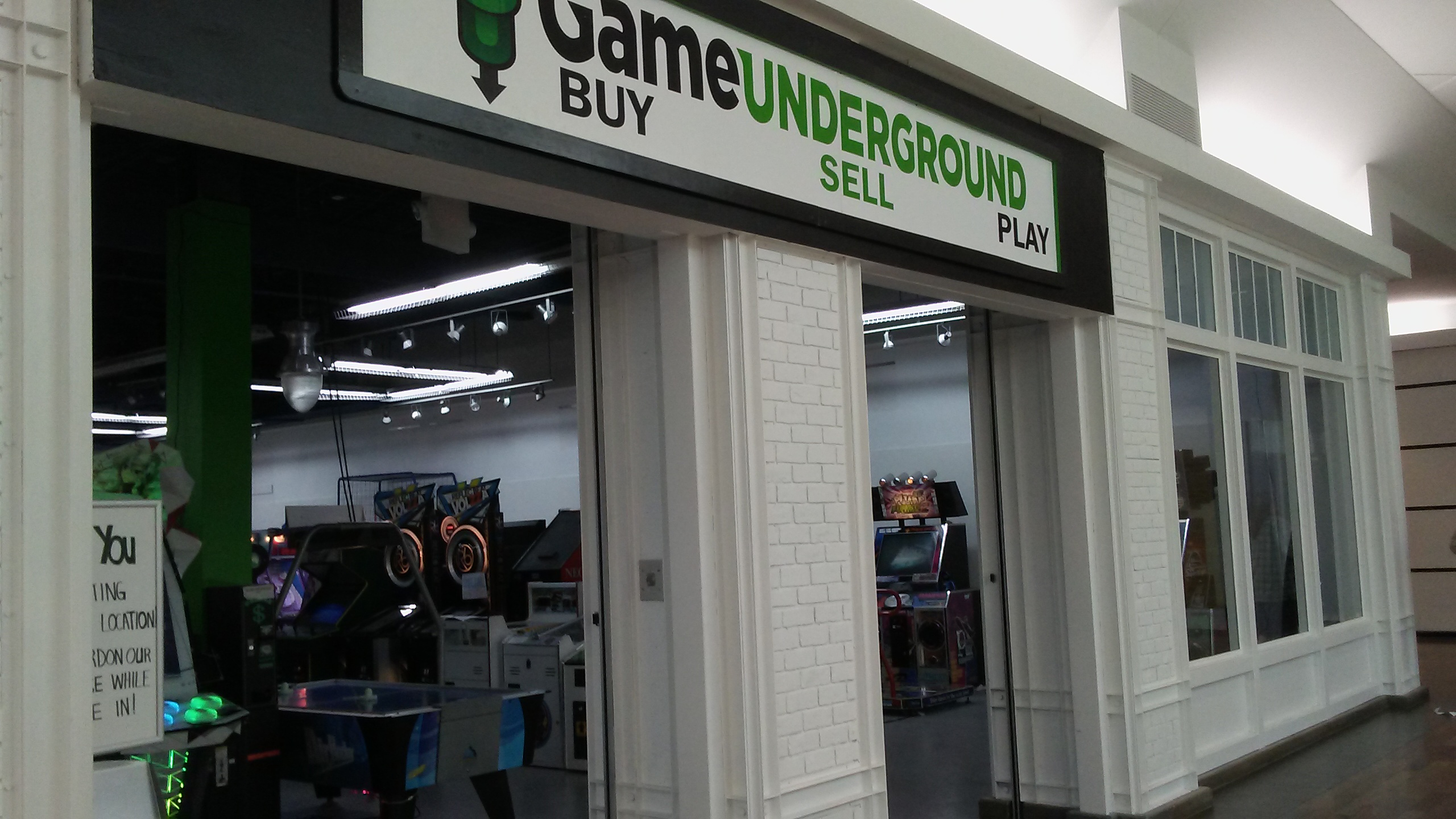
Two years ago (a year ago at the time of this trip), I went to Las Vegas to see their arcades. It wasn’t the fighting or racing games I came for, but their wide selection of Rhythm games I’d never seen in person. There was never a question of what the final arcade on this year’s journey would be. In my heart of hearts, I knew from the beginning that it would be this one.
FINAL TOTAL – Arcades visited: 45
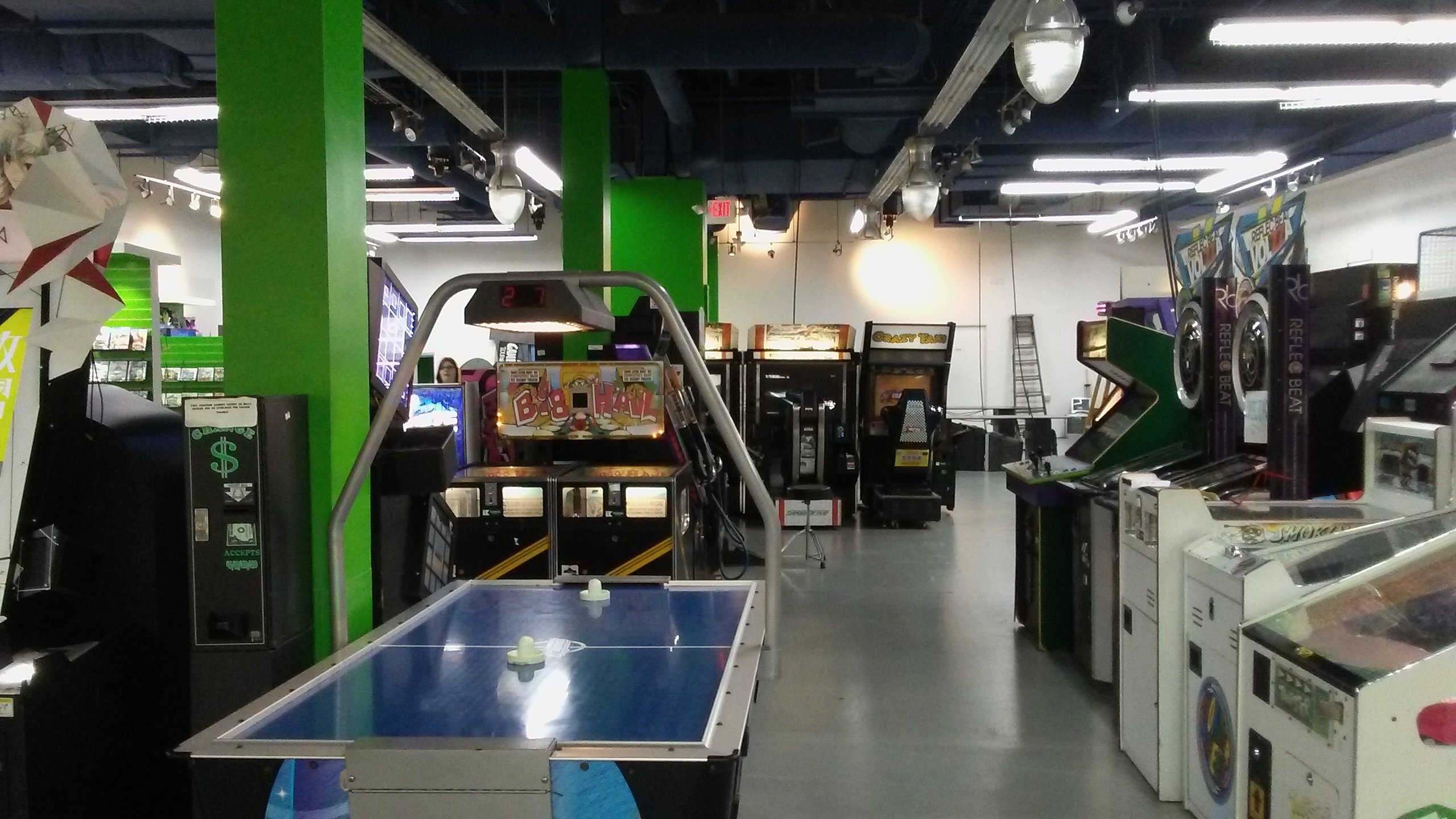
Game Underground is a tiny arcade in a mall on the far outskirts of Boston. They’ve had their share of troubles keeping a single location. When I arrived, it was days after reopening from a move, and at the time of writing this, they’d been forced to move again. Waltham is the current location of Game Underground. Honestly, I’m not exactly sure if that’s where it was back when I visited…
Either way, this trip had taken its toll on me. One arcade after another, never being able to stay at one for very long. I made it a point to spend an entire day at my final destination so I could play to my heart’s content, then sit around the air-conditioned motel room eating pizza rolls and watching TV. Good times all around.
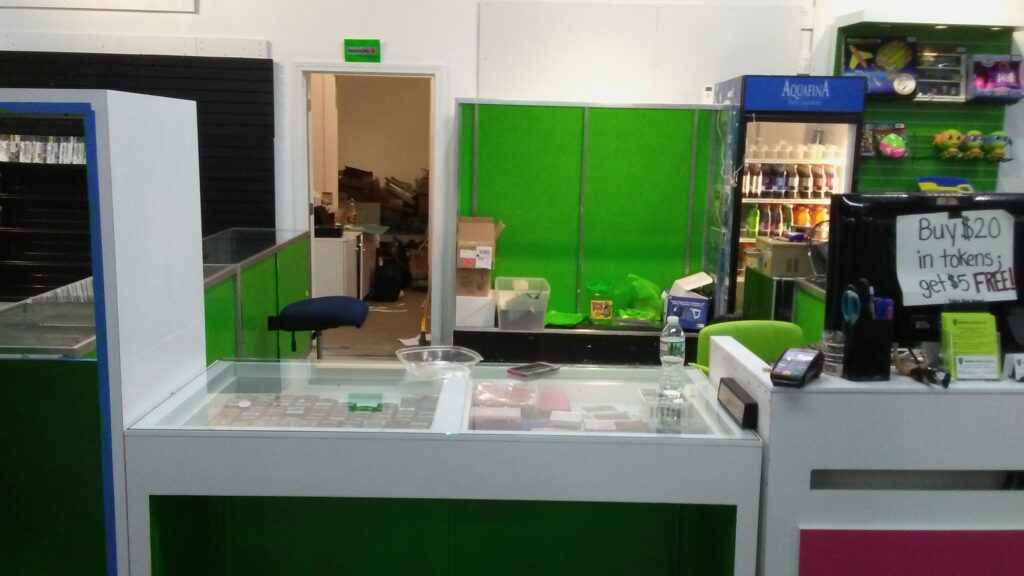
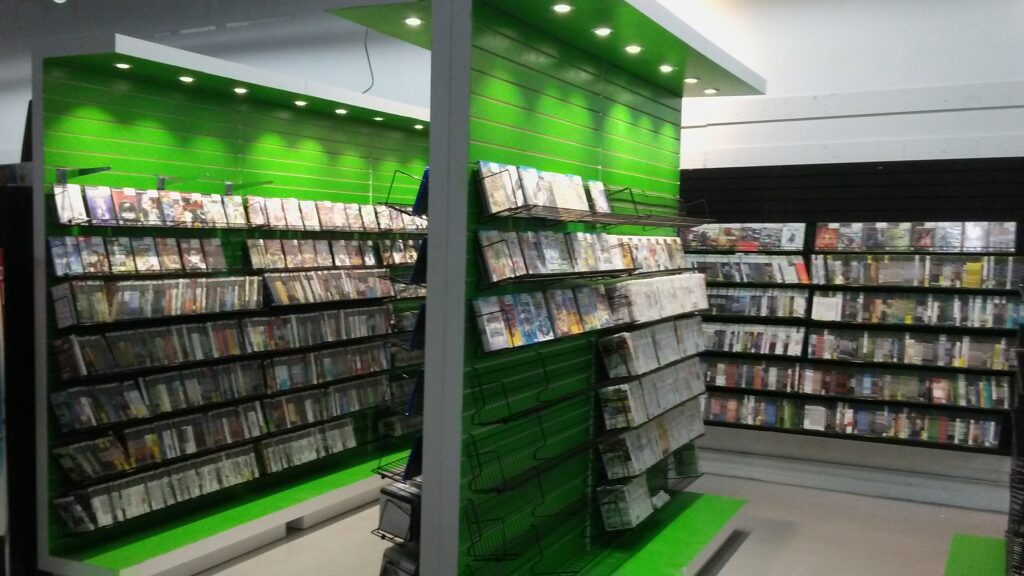
As you can see, Game Underground isn’t technically just an arcade. It’s also a tiny used video game shop. And by “small,” I mean “the photo on the right is their entire stock.” It’s just a supplemental business. I think they also run TCG stuff in the far back, but this place was still under construction after their reopening.

I’m not sure where to start, so I’ll go in whatever order I took pictures of the machines. Here we see a yellow Pop’n Music machine, one of the most common types. What’s far less common is the e-amuse add-on bolted to the side. This machine was released before Konami had made their network mandatory for all machines, so they offered an add-on that would give these models online functionality. We used to have a Pop’n here in Minnesota, but the owner couldn’t get an official upgrade kit, and Frankensteined a pin pad to the upper-right corner of the controls (you need the PIN to change some options on more recent versions).

This particular machine was running a very, very recent version of the game. The East Coast has its hush-hush network for getting games like this to go online, since only Round1 and Dave & Busters have access to the Western e-amuse network.

They didn’t have all rhythm games. Here, for example, is a Crazy Taxi machine with a very funny custom marquee. I intentionally waited for the title screen to come up before taking a photo so you could compare it to the official logo.

Here they have Initial D ver 4… I mean 5. Although there are eight versions of Initial D, there are only three “base” games all others are updates of. For example, ver 2 and 3 are just updates of the original with some physics tweaks, new stages, new story, new music, different story mode, etc. Ver 4 is an entirely different game running on different hardware and a different engine. By the same merit, ver 7 and 8 are both heavy updates to v6. If you’re following the pattern, v5 is a game that ran on the same hardware and was built entirely on ver 4. Those are the only two versions of the game to run on the Sega Lindbergh hardware (the Linux-based board that runs Let’s Go Jungle, House of the Dead 4, and After Burner Climax).
Version 5 was a bit different than the other update games. While it was a heavy revamp of ver 4, it completely overhauled how the cars handled. Version 4 was met with terrible reception because of how much the cars would slide around whenever you moved the steering wheel (“soap physics,” as I’ve heard it described). Version 5 listened to the complaints and tried their damnedest to fix the problem. It succeeded but ended up causing the opposite problem (“sandpaper physics”). Thankfully, ver 6 onward created a pretty reasonable balance between the two, leaving these two versions to be regarded as the ugly middle children. This is my first time seeing version 5 in person, so I can finally attest that these cars feel like they’re glued to the road.
I’m also told that this arcade now has Wangan Midnight Maximum Tune 3DX.

This is Guitar Freaks v8 and Drum Mania v8, the last games of this series before they were finally fused into “GitaDora.” I’m not all that versed on these series, but I can tell you that those memory card slots probably don’t work for this version.
I don’t think I’ve mentioned this before, but these two had a third sister game called Keyboard Mania at one point. The name speaks for itself on that one. You could link all three machines together to have one person on the keyboard, one on guitar, one on bass, and one on drums playing the same song. This feature was dropped when it was clear Keyboard Mania had no future.

While we’re on the subject of linking machines, and because I never have anything to say about Beatmania, there was also a very, very, very old version of DDR that could link up to a specific version of Beatmania. Neither of those versions is here in this arcade. Hell, Dance Dance Revolution 2nd Mix Club Version is one of the rarest versions out there. I doubt a single legitimate one exists in North America.

Hydro Thunder had a deluxe cab? Come to think of it, I’ve seen this machine before; it’s just been a long time. I guess Bemani, Crazy Taxi, and Initial D are all products of around the same era, so this is thematically appropriate. It still feels out of place somehow.

They had a very, very small number of ticket games. I feel like they just got these machines cheap and were using them as floor filler.

In 2013, DDR jumped aboard that “don’t use a subtitle” fad and released a game called “Dance Dance Revolution.” A year later, they released a significant update for the game that basically turned it into a new version. Fans refer to these games as DDR 2013 and DDR 2014, respectively. I have no idea which one this is since they’re both officially titled “Dance Dance Revolution” (and this was over a year ago, so I can’t remember which songs it had).
People assumed that calling this game “Dance Dance Revolution” meant that this would be the final, definitive version and that all future updates would be content patches. In 2016, Konami brought back the old naming convention with Dance Dance Revolution A(ce), putting an end to that theory. Then A turned out to be the final, definitive version (for now) and is still getting regular content updates to this day. UPDATE: Five years later and we’re up to A3.
So what was the point of dropping the subtitle in the first place? Hell, if I know.

Here we have the latest version of Pump It Up and fan-favorite Dance Dance Revolution Extreme (with a Max2 banner). I don’t think I’ve said yet, but this arcade feels very “for the fans, by the fans.” This isn’t the first rhythm game arcade I’ve ever been to, but it’s the first that chose its machines so carefully. As much as I love exploring arcades and seeing new games, this is precisely the type of arcade I’d come back to over and over. All of these rhythm games, racing games, and the fighting games we’ll see in a moment are games that encourage coming back to play them over and over. Fun World’s selection is breathtaking, but a laser-focused arcade like this is fun for an entirely different reason.

Oh, we’re getting to the fighting games. The thing on the left is just a generic multicade machine. The Neo-geo is the first on this trip. I forgot to get a good shot of the available games on. I can see SVC Chaos on the screen there. I want to say most of the other games loaded onto it were other fighting games like Samurai Showdown and King of Fighters, but I could be wrong.

This is Tekken 5. This is one of the very, very, very few fighting games released in North America that utilized a save card system. I doubt this particular machine had cards stocked, but it’s not impossible. It’s pretty easy to buy them in bulk.

Crackin’ DJ part 2 is Sega’s short-lived answer to Beatmania. Unlike Beatmania, which has a record for two players, this one requires one person to use both discs. The game has no buttons, only the two spinning discs and the switch in the middle. If you’ve ever played a rhythm game before, you can probably guess how this works: The screen tells you which disc to spin and how while also making you constantly push that switch in the middle back and forth. This game is unfun because you’re forced to rapidly move your hand from the discs to the switch and back throughout the entire song.

Here we have three candy cabs featuring Street Fighter Alpha 3, Out of Order, and Super Street Fighter 2 Turbo. This place has a substantial competitive fighting game community. On top of the arcade machines, they seem to run console fighting game tournaments nightly. I can only assume this is the main fighting and rhythm game hub for the entire Boston area.

The hell is this? I know it’s some ticket game by Andamiro, the Pump It Up guys, but I’ve never seen it before. Weird.

As a refresher, Bemani (originally short for BeatMania) is the collective term Konami uses for its rhythm game series. Beatmania, DDR, Drum Mania, Guitar Freaks, and other such games fall under that label. The year 2000 was one of the biggest years for new Bemani franchises, marking the debut of Beatmania III, Dance Maniax, Pop’n Stage, Keyboard Mania, and Parapara Paradise. Each and every one of those series went on to die a swift death. Konami spent the rest of the 00s coasting on the success of the older Bemani series and didn’t attempt to start a new franchise that decade.
With the sole exception of Jubeat released in 2007.

That is, until the release of Reflect Beat in 2010. This is a game that was obviously meant to be played on ipads. If you own a tablet, go ahead and download it if you’re curious. The arcade game is more or less identical but with more content. Musical balls fall from the top of the screen, and you draw the line at the bottom to reflect them to the beat. It’s worth noting that this game is rare in the states by Bemani standards. There are a grand total of four of these babies in public arcades here in the US of A (and one in Canada).
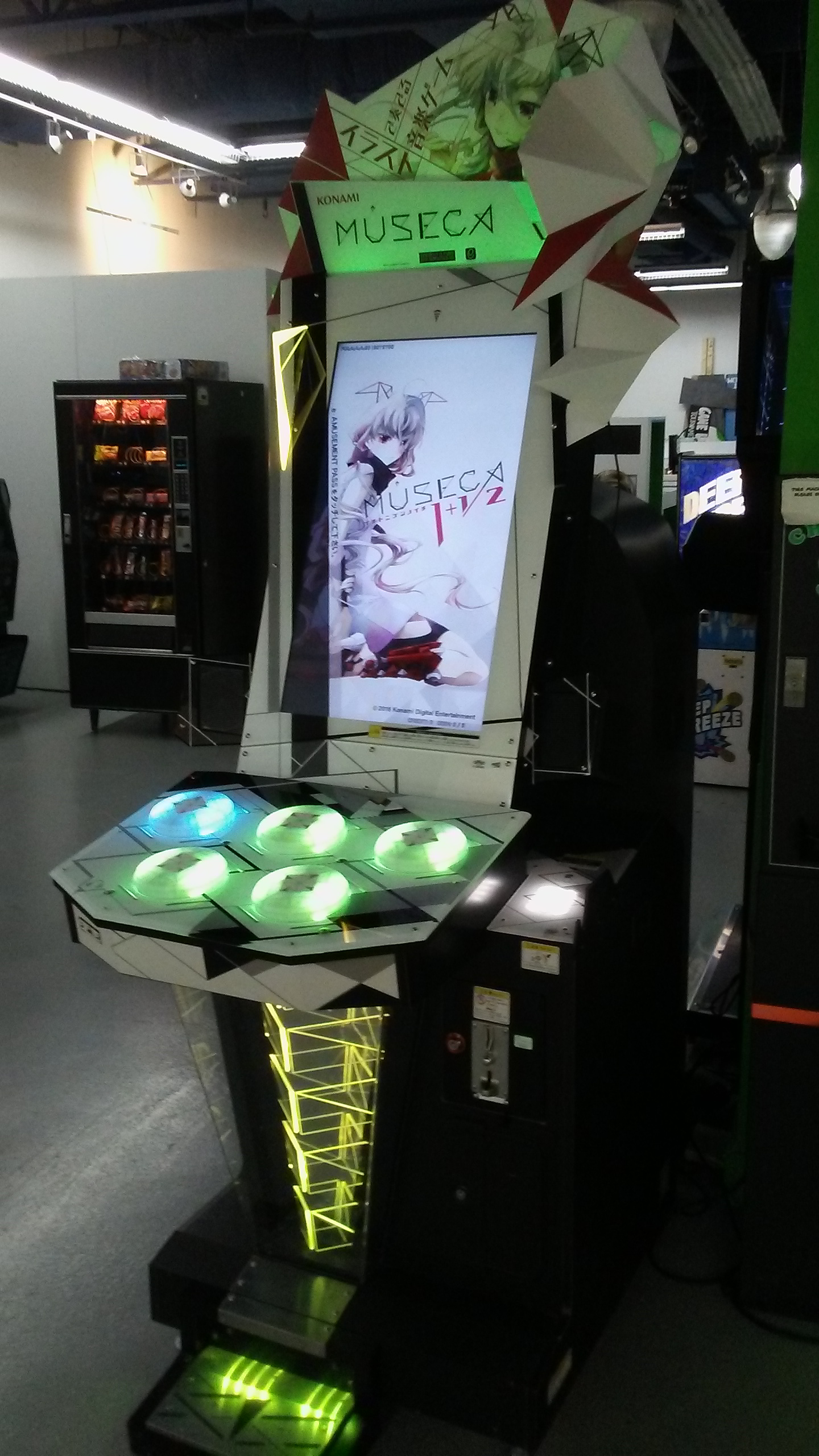
Jubeat is the game that opened the floodgates for the second wave of Bemani games. Sound Voltex, Dance Evolution, Future Tomtom, Beatstream, Museca, Nostalgia, and Dance Rush were all released since. I’ve talked about all of those except the last two on this blog before (they’re both very new), so skim my older articles if you’re curious about them. Strangely, Museca here was the only other modern Bemani game they have. I’ve personally got no complaints, since I’m really not a fan of most of them. It’s easy to see why Bemani fans are starting to get annoyed with how often they’re pumping out new series.
UPDATE: Of those games I listed, Nostalgia is the only one still getting new content as of 2023. All of the other series have died off.

Before we leave, there’s one last thing I’d like to point out. This is Dance Maniax, one of those very short-lived 2000 Bemani franchises I mentioned earlier. We’ve run into this one a few times before, but this one was special. As I was leaving the store, I struck up a conversation with one of the local players and had to ask what the deal with it was. He seemed to dance around the answer a bit, so I put it as clearly as possible: “DanceManiax was canned in 2001, but I’m pretty sure Caramelldansen Speedy Mix didn’t exist back then.” Finally, he understood that I wasn’t just some casual who happened to wander in and let me in on the secret. It turns out that this game has a very hardcore cult following that makes fan-made updates for it. Huh.
After enjoying myself for a few hours, I returned to enjoy the peace and quiet of my motel room. The bus back home wouldn’t arrive until tomorrow morning, so I had the rest of the day to get some rest finally.
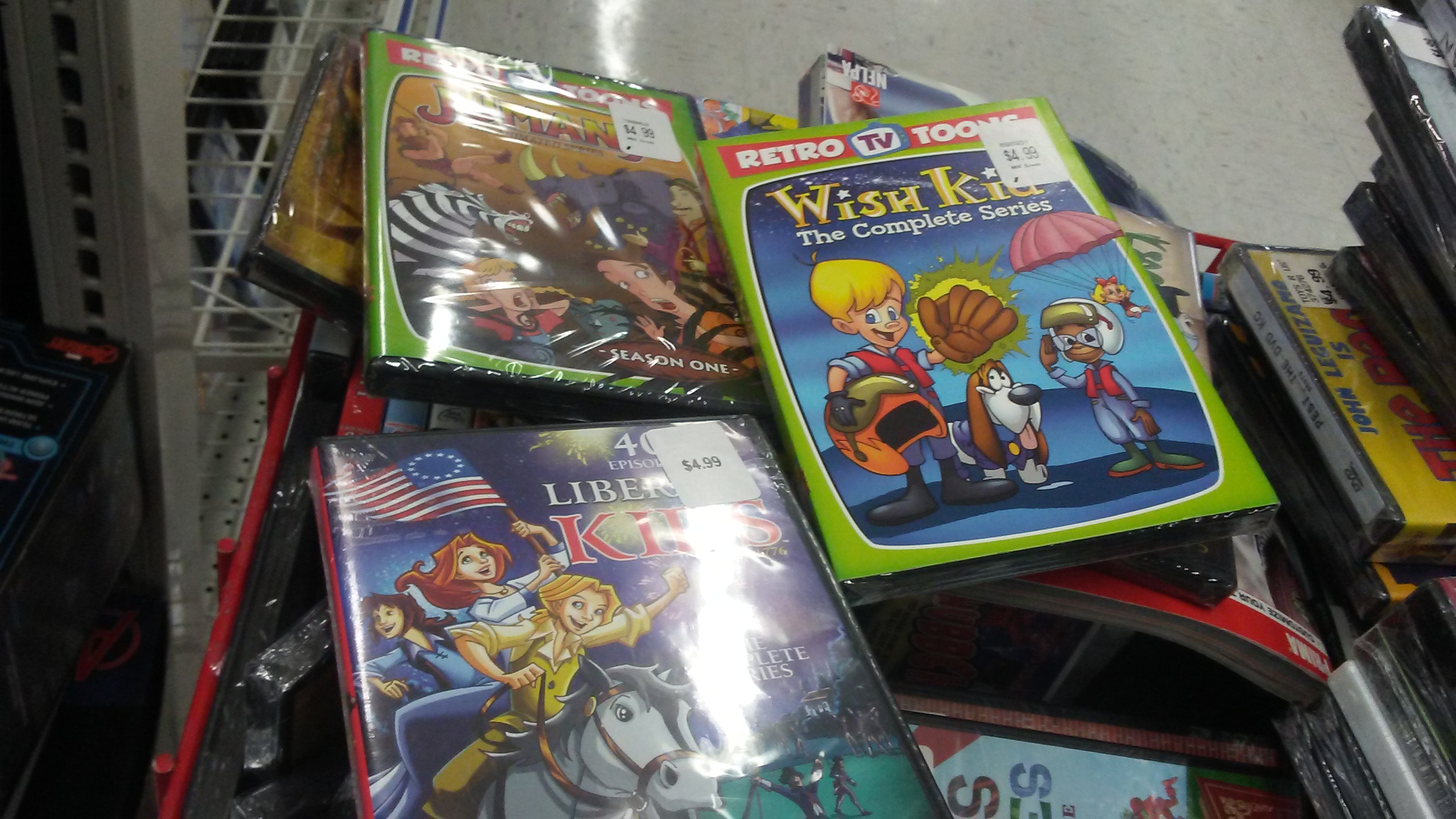
The following day, the bus would come into the parking lot of a local ToysRus. I decided to pop in to kill some time and found three bizarre cartoons in the DVD bin. Wish Kid is an animated series based on Macaulay Culkin to cash in on the popularity of Home Alone. I remember seeing quite a bit of it because it came on right before reruns of Super Mario All-Stars. Jumanji is a very ugly cartoon based on a movie of the same name. I’ve heard that it’s a surprisingly solid series once you get past how ugly it is. It even has a conclusive ending. The third is the PBS series Liberty’s Kids, a show about the founding fathers from the perspective of a bunch of kids. The theme song sums up the show’s tone much better than I ever could. Those dramatic zooms and fades aren’t just a cool effect for the theme song; the show does them constantly to emphasize how dramatic something as mundane as using the printing press to warn the people about an upcoming invasion was. I wouldn’t call the show good exactly, but it gets five stars for effort. Just look at all of the star power they got for the voice cast. Arnold Schwarzenegger, Whoopi Goldberg, Dustin Hoffman, Sylvester Stallone, Liam Neeson, Andrew Rannells, and a bunch of celebrities I don’t recognize all had appearances. You could do an entire episode of Hollywood Squares with just actors who did voices on Liberty’s Kids.
Honestly, I was going to cut this rant out, but this was the last time I ever stepped foot in a ToysRus. Rest in peace.
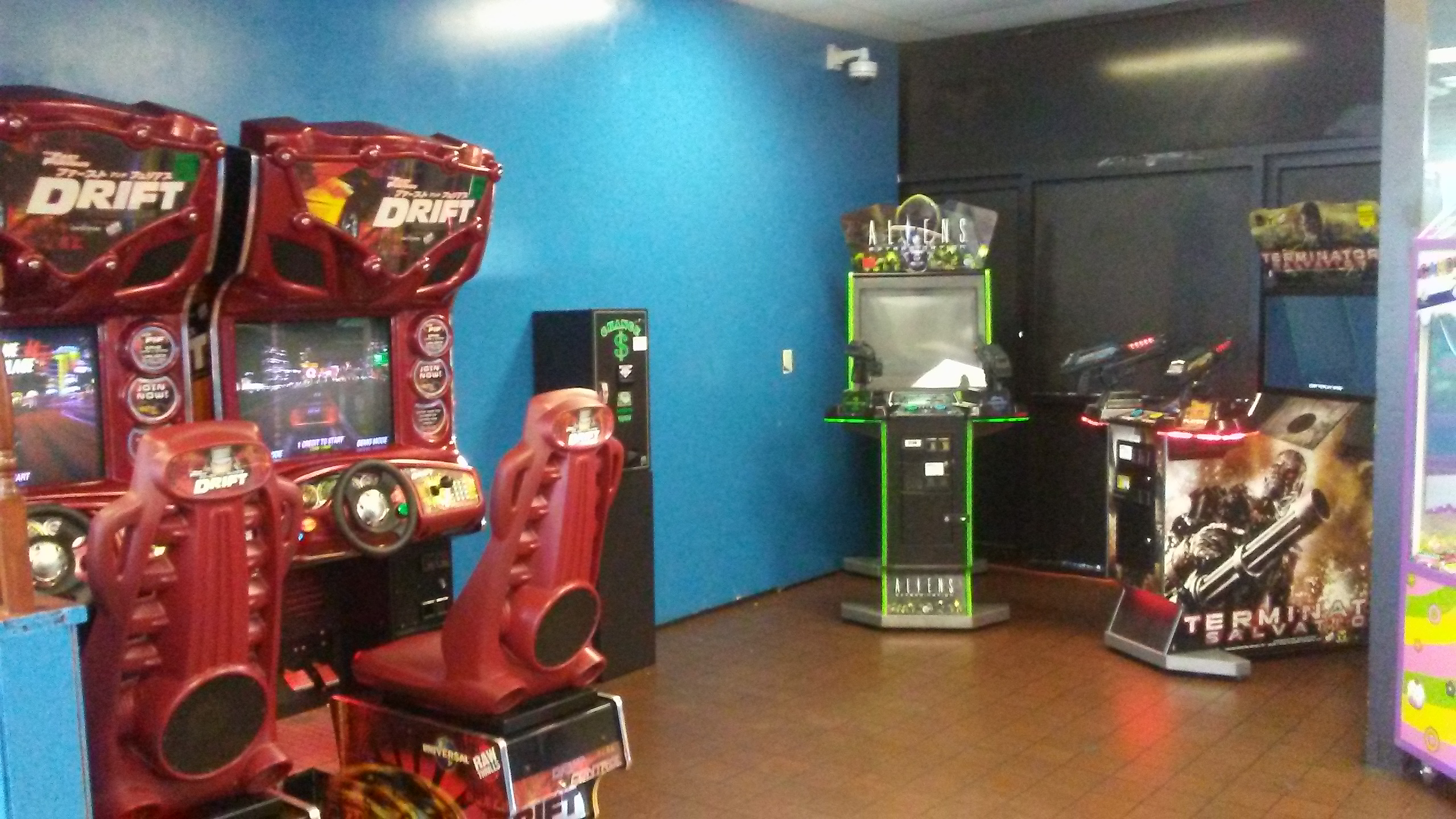
I also got to see a few more Greyhound bus station game rooms. If you count all of these, which I didn’t, I visited over 50 arcades on this trip. I’ve also been meaning to mention for a while that there are two different Aliens games that I’ve gotten mixed up in the past. This one is Aliens: Extermination from 2006. The huge red one that I usually run into is Aliens: Armageddon from 2014. If you ever see a new arcade game called “Alien Covenant,” that’s just a re-release of the 2014 game with movie tie-in branding.
EDIT: By the way, if I were making the trip today, I absolutely would have counted the Greyhound stations toward the final total.
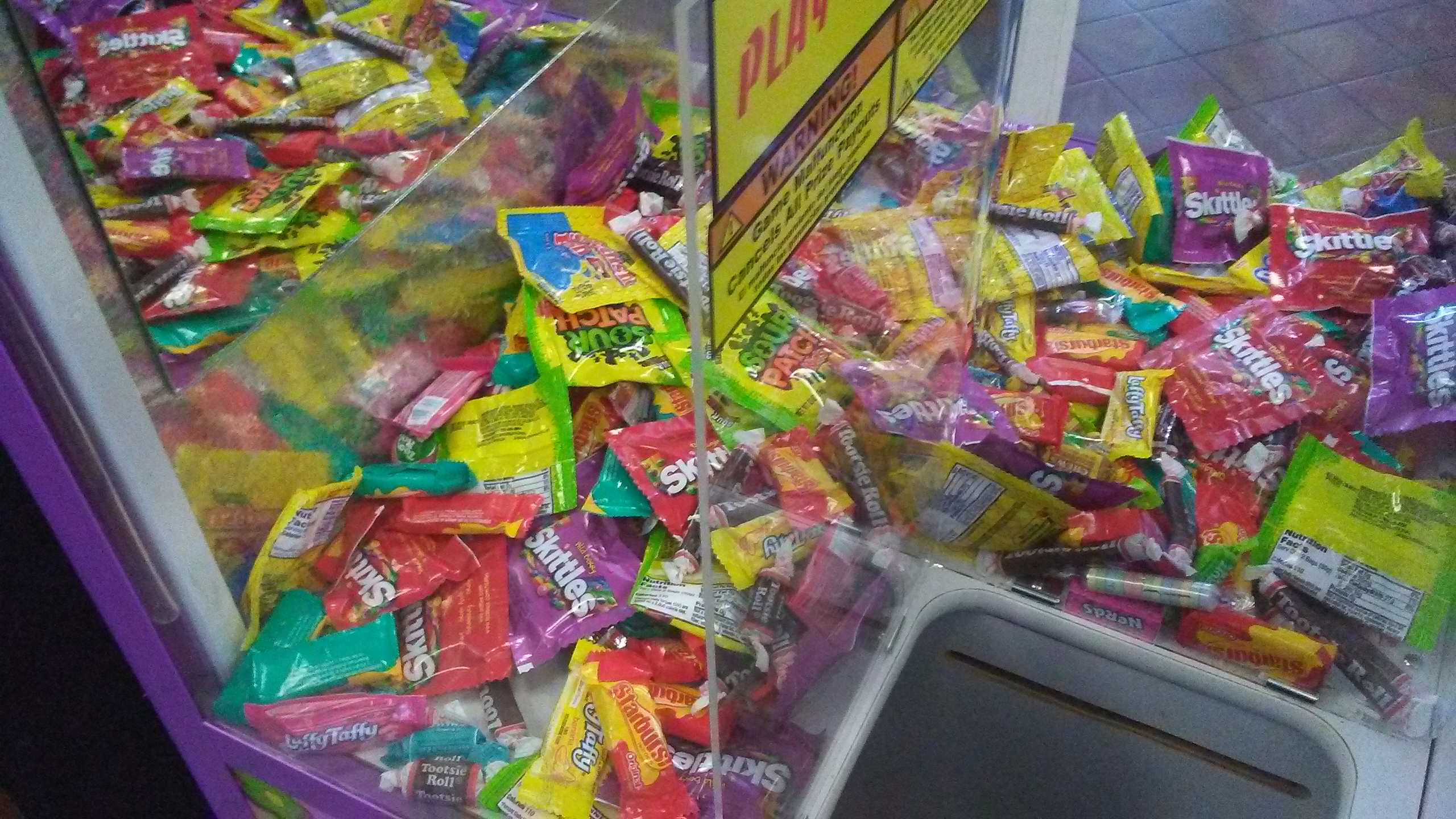
They also had one of the best Play Til You Win claw machines I’ve ever seen. Usually, these things are filled with cheap garbage candy and a few A-listers to tempt you into putting coins in. This one is loaded with Skittles, Sour Patch, and Starburst.
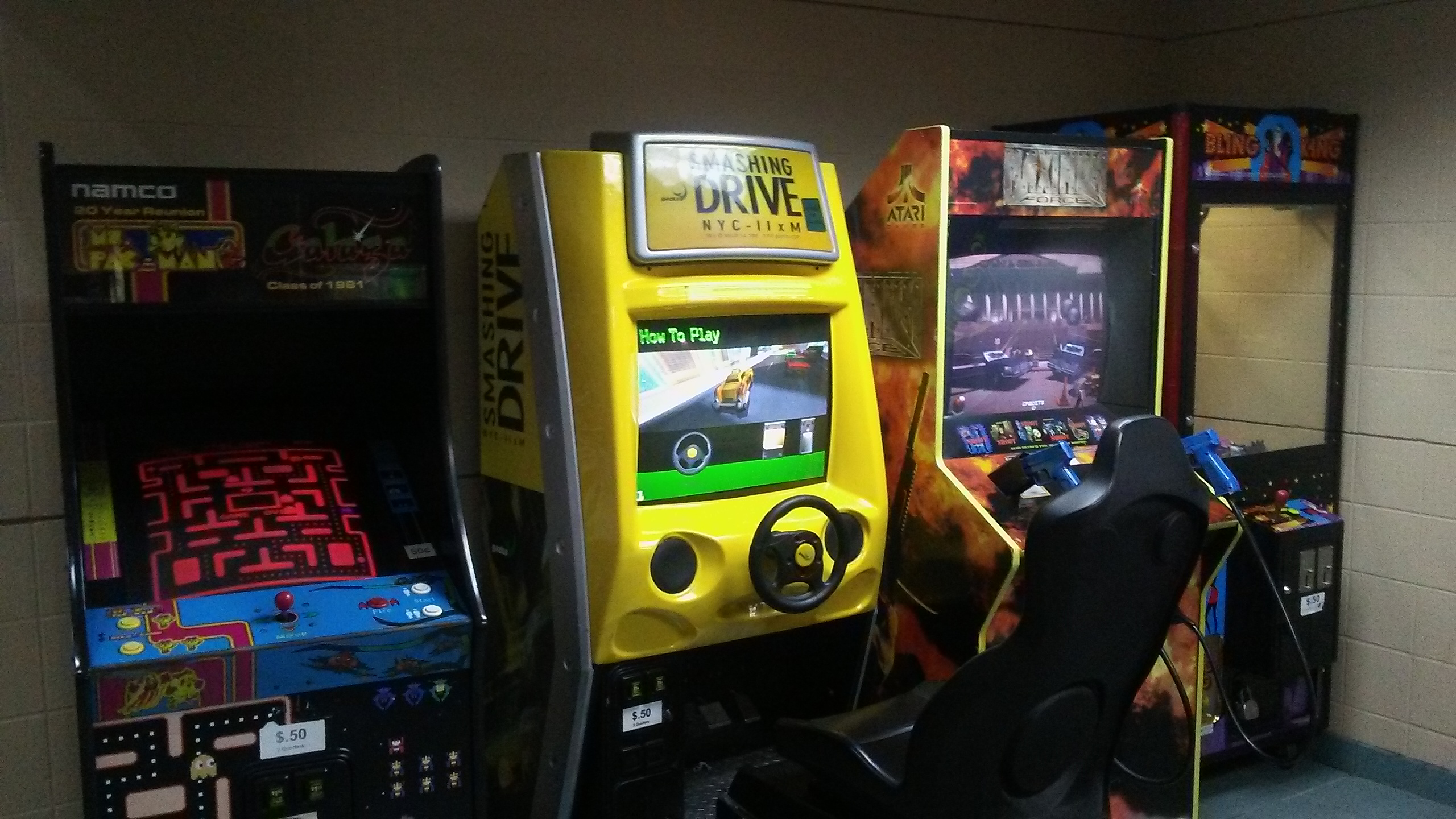
Here’s a different Greyhound station showing the default configuration of Shooting Game-Driving Game-Retro Game. The Pac-man screen is broken and displays everything bright red, so you can’t tell which ghost is Blinky. This is important. The ghosts have different AI, and Blinky is the most dangerous.
But the strange thing here is that they went with Smashing Drive, of all things, for their driving game. That’s something you don’t see every day.
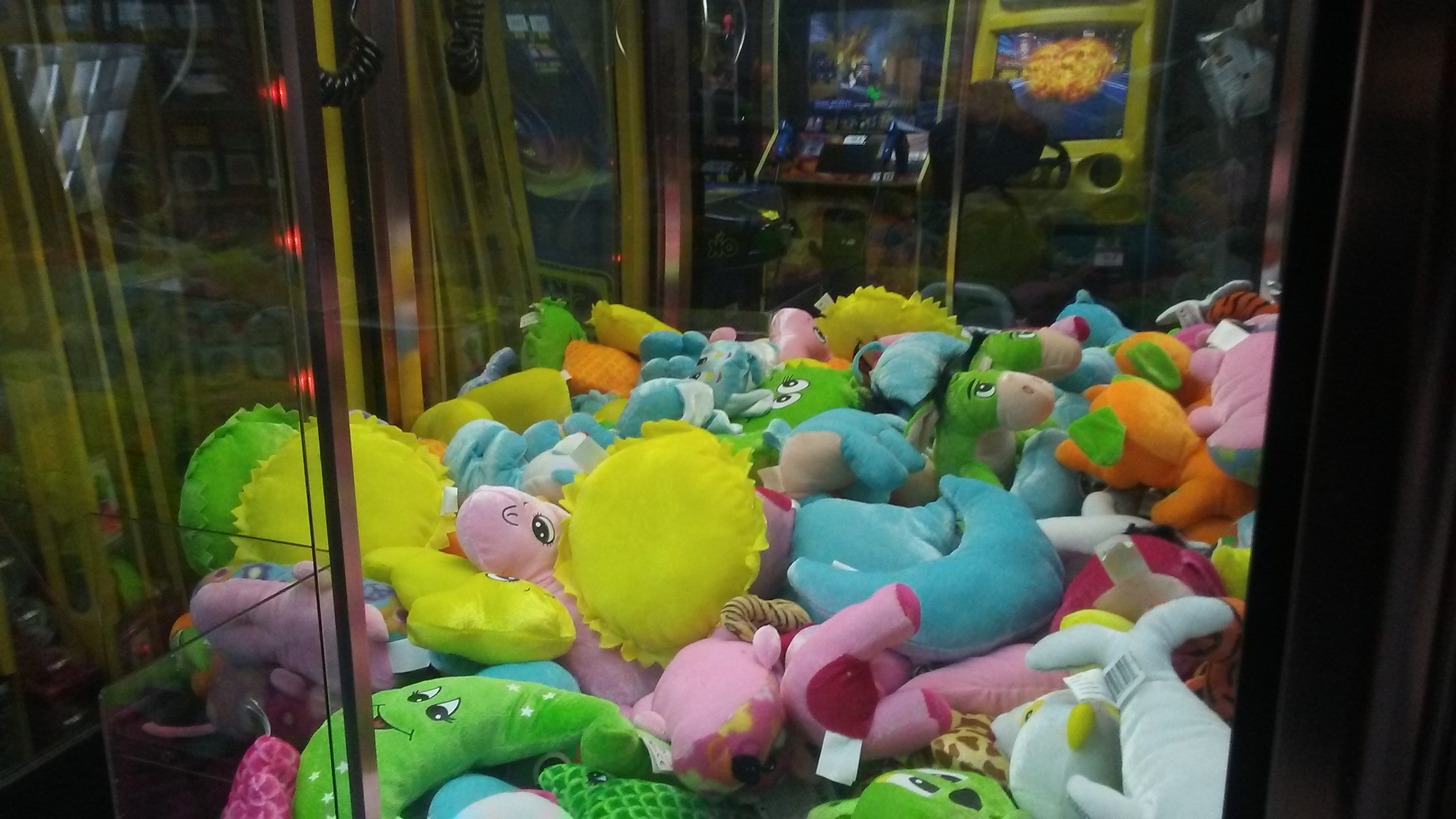
Regarding that Green Eeyore in the back. I think, but I’m not sure; he’s from a line of late 00s Disney claw machine prizes that were “flavored” versions of various Disney characters. For example, Lime Mickey was bright green; Vanilla Mickey was shit; Chocolate Mickey was brown, etc. If so, he’s been in there a while. Or I could have no idea what I’m talking about. I’m no expert.
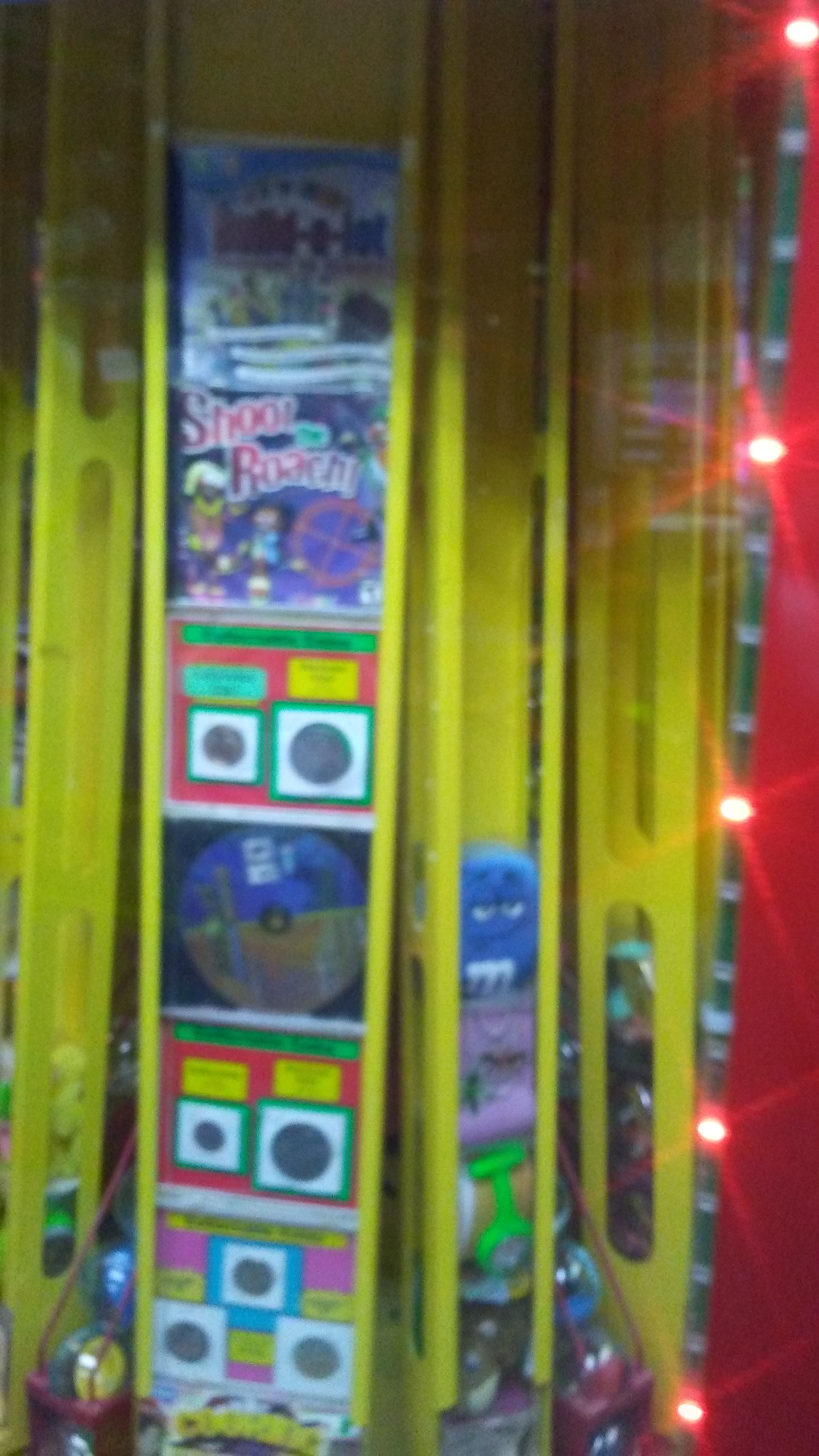
According to Google, Shoot the Roach is a bargain bin PC game from 2005. The game above it is Build-a-lot, from 2007. I’m not saying either game has been in there that long, sice these games have a ridiculously long shelf life, but itmakes you think.
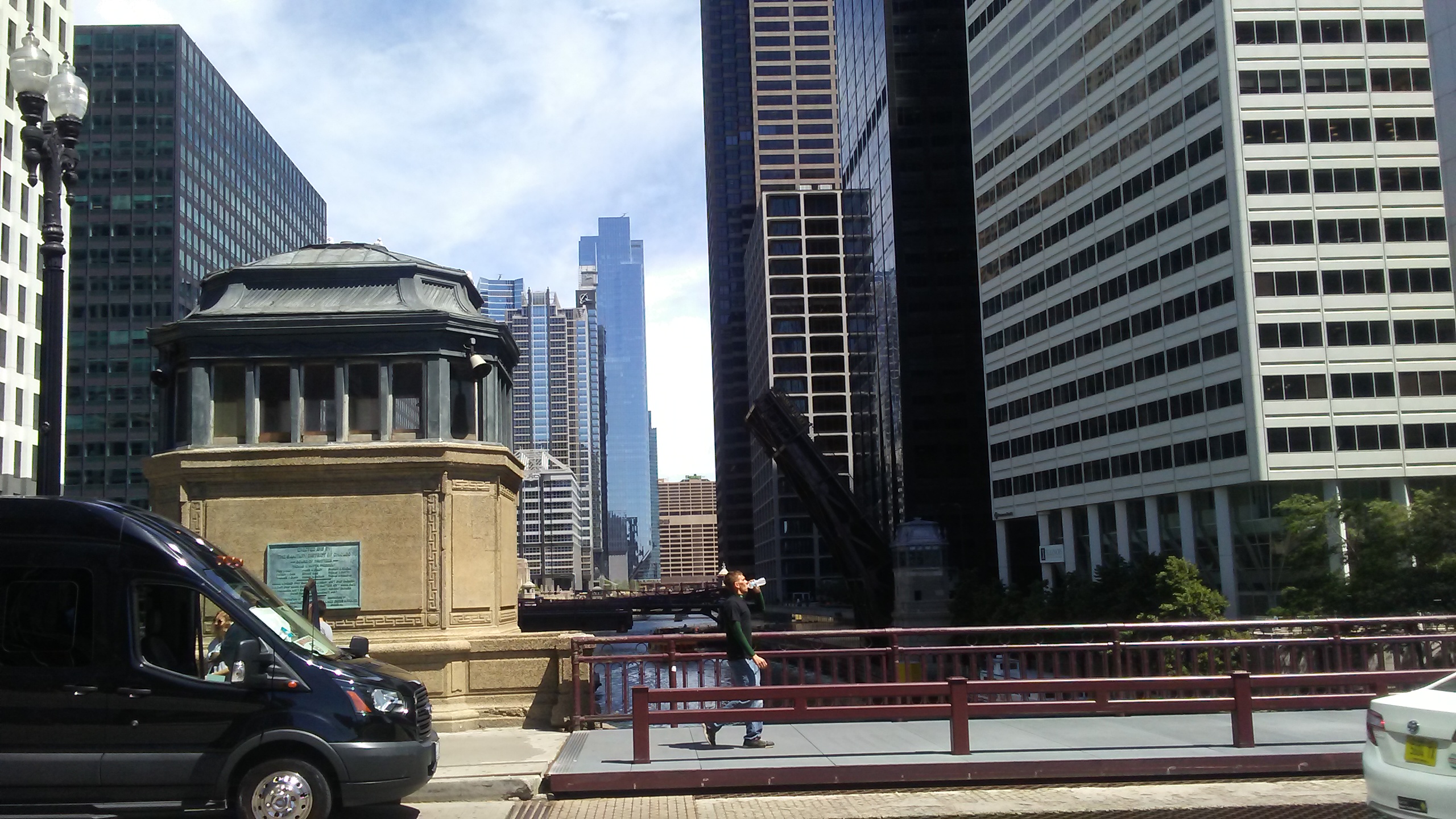
After a while, the bus stopped in Chicago, and I really needed food. I made a quick dash for the nearest Mcdonald’s, which was hidden pretty well. It even had drawbridge sidewalks. I had just enough time to eat it before taking back off.

As the sun was beginning to set, I finally arrived back home after being on the road for 19 days (it’s a two-day trip). After spending nearly three weeks on buses, beach boardwalks, hell, the concrete jungle, and any place else I could find an arcade, I took a moment to appreciate those beautiful reflective buildings that make up Minneapolis’ skyline.
Stay tuned for the epilogue post, where I tie up a few loose ends.

